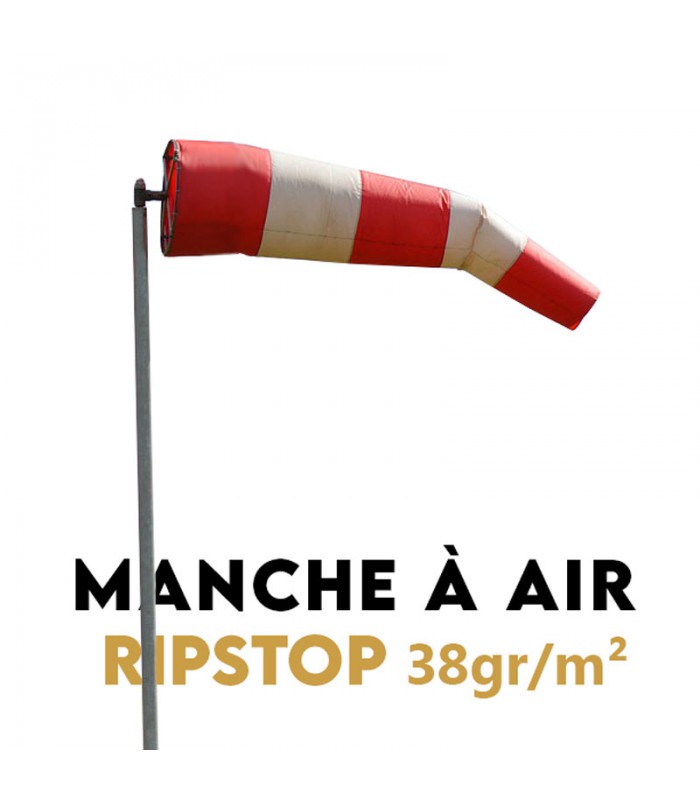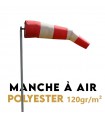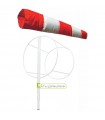A practical, robust windsock
The Ripstop windsock is made from waterproof, tear-resistant fabric. It can be used to determine wind direction and speed. It offers a durable solution at an attractive price.
Sizes: Ø 30 x 1m / Ø 30 x 1m80 / Ø 40 x 2.50m
Resistance: High
Environment: Wet or dry, with low to moderate wind values
Use: Unofficialheliports/airfields , paragliding, kitesurfing etc.![]() Windsock made entirely in France .
Windsock made entirely in France .
Sizing guide
Excellent value for money
A fabric with innovative properties
Ripstop windsocks offer excellent value for money. In fact, it offers a durable solution at an attractive price.
As a windsock is intended for outdoor use, it requires a resistant material. Ripstop is the right fabric for the job. Although lightweight, it offers the same resistance to tearing as much thicker fabrics. What's more, it has waterproofing properties, which are very useful in areas subject to regular rainfall. For all these reasons, it is found in army combat gear and firefighters' protective clothing.
Nevertheless, Ripstop windsocks are recommended for use in moderately variable climatic environments. For greater resistance, opt for a polyester windsock.
Attaching a Ripstop windsock
The windsock is attached using halyards. For added rigidity, a ring has been placed at the entrance to the windsock.
The Ripstop windsock essential for reading the wind
To know the wind direction at a glance, the windsock is an indispensable tool. All you need to do is look at the tip of the sleeve, which is always pointing in the direction of the wind as it blows.
Unlike a wind vane, a windsock can also be used to estimate wind speed. This is achieved by using the 5 alternating colored rings that make up the windsock. Each ring, when inflated, corresponds to approximately 5 knots (9km/h). For example, if two rings are inflated, then the wind speed will be estimated at 10 knots, or 18km/h. If the sleeve is fully inflated by the wind, then the wind is estimated to be blowing at over 25 knots, or 45 km/h. Conversely, a fully deflated sleeve indicates that the wind force is zero, i.e. less than 5 knots. However, all these observations can only provide an estimate. For greater accuracy, you should use an anemometer.
However, all these observations can only provide an estimate. For greater accuracy, you should use an anemometer.
About the Ripstop windsock
Different sizes for different activities
Ripstop windsocks come in a range of sizes to suit a variety of uses and activities. Ripstop windsocks come in several sizes:
| Dimensions | Recommended use |
|---|---|
|
Beach, Small construction site, Terrace.. |
|
Heliport-Helipad-Unofficial aerodrome, Construction site |
Information on ripstop windsocks
These windsocks are ideal for use in environments with moderate variations in wind speed. Above 90 km/h, use a nylon or STNA windsock for greater durability.





















